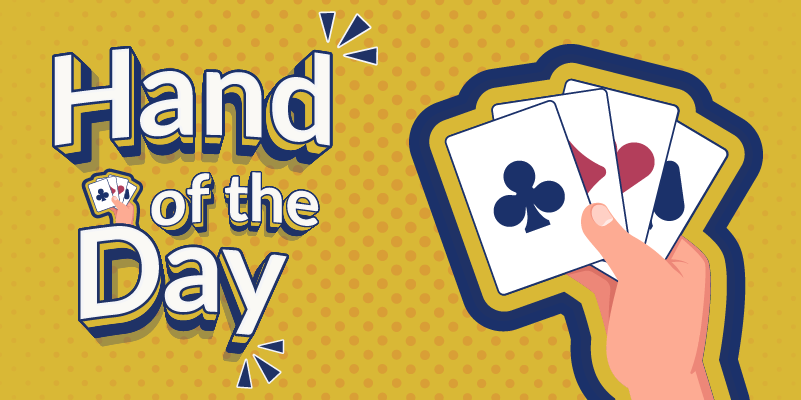



This conundrum was written by Mark Horton and was originally published in the book Misbid these hands with me - you can find out all about it further down the page.
The attempt to win a bridge match consists of many deals, but always starts with Board 1; Some players like to attempt to stamp their authority on the opening deal, and at the start of a long match against unknown opponents, I pick up as South:
♠Q2 ♥8763 ♦5 ♣KQ10975
I am dealer, with neither side vulnerable. I could open 3♣, but I am a club short and a four-card major on the side is frowned upon in some circles. With fingers crossed, I open 1♣. When West passes, partner jumps to 4♦, which I have to announce as a convention. East asks if it is a splinter, but I explain it rejoices in the name of Redwood and asks for keycards with clubs agreed. I respond 4♥ to show 1 or 4 keycards and partner jumps to 6♣, leaving us with this sequence:
West leads the ♦3 and dummy is predictably powerful:
It’s possible that West has led away from the ♦K, but most players tend not to follow Garozzo’s advice about making aggressive leads against slams, so I put up dummy’s ace, East following with the nine. Assuming the ♦K is on my right, I can just about see ten tricks, and the combination of the spade finesse and a heart ruff will be enough to get me up to the required number. As I am going to need a heart ruff, at Trick 2 I cash dummy’s ♥A and then exit with the two. East, having followed with the ten, now wins with the jack and returns the ♣3. I put in the ten, and when West produces the jack, I win with dummy’s ace When I play dummy’s ♦Q, East covers with the king and I ruff and cash the ♣K, pleased to see both defenders follow. Now I ruff a heart, East following with the queen, and play the ♦J, on which I discard the ♠Q. I return to my hand by ruffing a diamond and cash the ♣Q, to reach this position:
When I play the ♣10, discarding dummy’s ♠8, West pitches the ♦10 and East, having already thrown the ♠4, ♠5 and ♠7, now parts with the nine. When I play the ♠2, West follows with the ten. I must assume West’s remaining card is a spade, but is it the three or the king? If East started with ♠K9754 ♥KQJ10, he has been squeezed down to the singleton ♠K. Recalling Giorgio Belladonna’s advice that ‘you set up the squeeze, but then you take the finesse’, I am about to call for dummy’s jack, but then it occurs to me that it would be remarkable if East had foreseen the ending and concealed the missing ♠3. I go up with dummy’s ace and the appearance of East’s king is a happy sight.
This was the full deal
Post-Mortem
The standard for opening bids has been falling for some time, but there is no reason for South to open this hand at the one-level. Despite the presence of the four-card heart suit, 3♣ is a fair alternative — and that was chosen in the other room, North asking for keycards and kings before again settling for 6♣. West led the ♥4 and declarer won with dummy’s ace and returned the two, East winning with the king and exiting with the ♣3. Declarer put in the ten, took West’s jack with the ace, cashed the ♦A and continued with the queen, covered and ruffed. Now declarer fatally ruffed a heart and tried to cash the ♦J. East ruffed and declarer overruffed and played dummy’s last heart. West could ruff that and there was still a spade to lose, so that was two down, -100
In 2007, Horton wrote Misplay These Hands with Me, a deliberate homage to Reese's classic, Play These Hands with Me. The difference was that the declarer in Horton's book always made an error, sometimes obvious, sometimes not so much. This successful book was the basis of a long-running column in the ACBL's Bridge Bulletin, a sequel in 2019, and earlier this year, Misdefend These Hands with Me. Now the same author turns to the topic of bidding, and once again gives the reader a chance to learn from someone else's mistakes. All the deals are taken from top-level play.




How could N know S had a club suit of more than three cards to make this 4D bid?